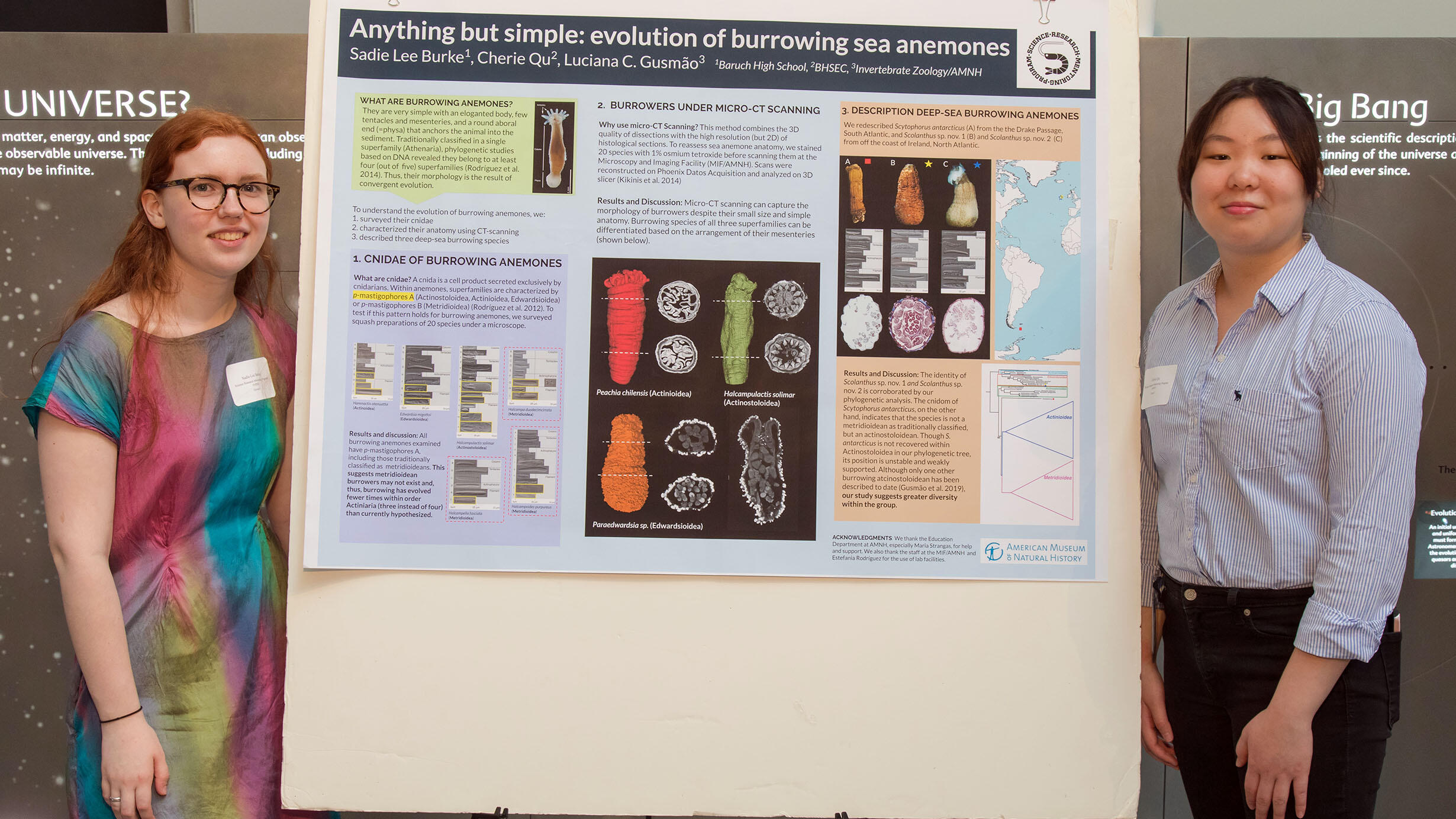New Species of Sea Anemones Described by Students Working With Museum Scientists
by AMNH on
by AMNH on
 SRMP students Sadie and Cherie helped describe two new species of burrowing anemones under the guidance of American Museum of Natural History scientists Luciana C. Gusmão and Estefanía Rodríguez.
SRMP students Sadie and Cherie helped describe two new species of burrowing anemones under the guidance of American Museum of Natural History scientists Luciana C. Gusmão and Estefanía Rodríguez.The new species are both deep-sea anemones, occupying a marine habitat far removed from the shallow shoreline tidal pools where many colorful species of this tentacled animal are usually spotted. They were described by high school senior Cherie, who is also a student in the Museum’s Lang Science Program, from Bayside, Queens, and Reed College freshman Sadie, from Staten Island, who worked with Museum postdoctoral fellow Luciana C. Gusmão and Estefanía Rodríguez, curator in the Division of Invertebrate Zoology, in 2019. The students are co-authors on a new paper, which was recently published in the journal American Museum Novitates.
The newly described species Scolanthus shrimp and Scolanthus celticus are small, around 1.5 cm (less than an inch) long, and yellow or brown and white in color. They were found in the Whittard Canyon, a deep-sea canyon between the Celtic sea and Atlantic Ocean off the west coast of Ireland.
The researchers named Scolanthus shrimp after the Museum's SRMP program, which pairs high school students with Museum scientists on an authentic research project. Scolanthus celticus is named in honor of the Celtic Explorer, the research vessel that collected the anemone specimens using a remote operated vehicle (ROV) in ocean depths of more than 1,700 meters, or just over a mile.
In order to describe the two species and assist in writing the study, the students analyzed the specimens’ morphology and genetics under Gusmão's guidance. Their research adds to a flurry of recent findings about the Scolanthus genus, for which half of the diversity has been described over the last 10 years.